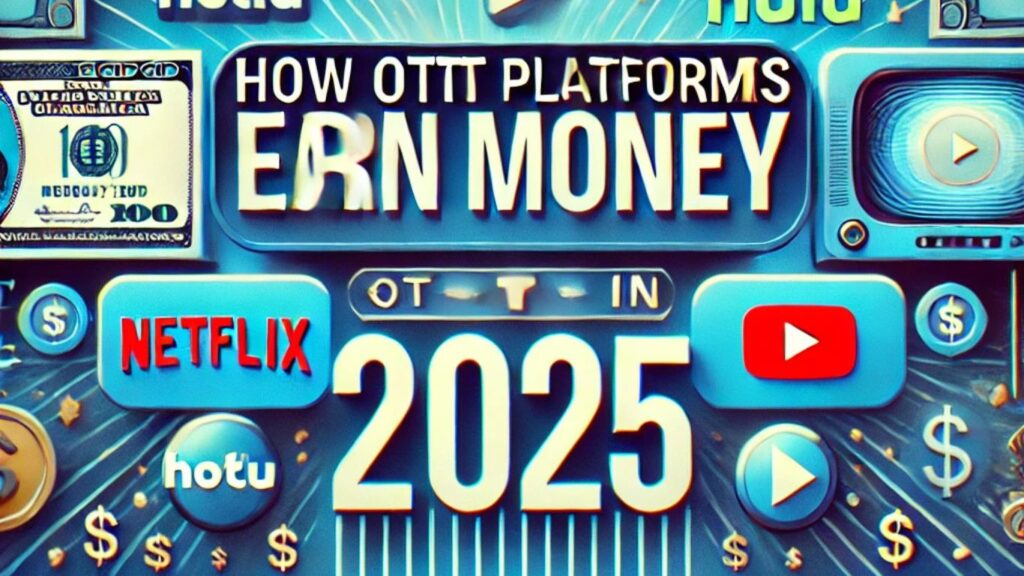OTT platforms have transformed how we consume entertainment, offering a wide array of content over the internet. But how do these platforms generate revenue? Let’s explore the monetization strategies that keep OTT platforms thriving in 2025.
1. Subscription-Based Revenue Models (SVOD)
Subscription Video on Demand (SVOD) is one of the most popular revenue models for OTT platforms.
- How It Works: Users pay a monthly or yearly fee to access unlimited content.
- Why It Works: Regular income enables platforms like Netflix and Disney+ to invest in high-quality, original shows and movies.
- Trends for 2025: Platforms are experimenting with flexible pricing and regional pricing strategies to attract a wider audience.
2. Advertising Revenue Models (AVOD)
Ad-supported Video on Demand (AVOD) is another effective method.
- How It Works: Platforms like YouTube and Tubi offer free content supported by advertisements.
- Why It Works: With advanced data analytics, ads are targeted to user interests, improving ROI for advertisers and engagement for viewers.
- Trends for 2025: AI-driven ad personalization and immersive ad formats like shoppable ads are gaining traction.
3. Pay-Per-View or Transactional Models (TVOD)
Transactional Video on Demand (TVOD) lets users pay only for the content they want.
- Examples: Platforms like Apple TV and Google Play offer movies or events on a pay-per-view basis.
- Why It Works: This model appeals to viewers who prefer flexibility over long-term subscriptions.
- Trends for 2025: Exclusive premieres and early access to blockbusters drive TVOD adoption.
4. Hybrid Models
Hybrid models combine subscriptions and ads to maximize revenue.
- How It Works: Platforms like Hulu offer multiple tiers – a basic tier with ads and a premium, ad-free tier.
- Why It Works: This strategy accommodates a wider audience and allows platforms to generate revenue from both ads and subscriptions.
- Trends for 2025: Expect more OTT platforms to introduce hybrid tiers for affordability and choice.
5. Licensing and Partnerships
OTT platforms often license their content to or from other production companies.
- How It Works: Content creators sell distribution rights to platforms like Amazon Prime. Alternatively, platforms license their original content to TV networks.
- Why It Works: Licensing ensures an additional revenue stream while increasing global reach.
- Trends for 2025: Co-production deals and regional partnerships are expanding library offerings.
6. Merchandise and Ancillary Revenue
Original content creates branding opportunities that extend beyond the screen.
- Examples: Popular shows like “The Mandalorian” have merchandise, video games, and books.
- Why It Works: Fans are willing to invest in memorabilia, creating an additional income source for platforms.
- Trends for 2025: Digital merchandise, such as NFTs, is becoming a key revenue driver.
7. Monetizing Data Analytics
OTT platforms analyze vast amounts of user data.
- How It Works: Data insights inform content creation and personalization, improving user retention.
- Why It Works: Some platforms sell anonymized insights to third parties for market research.
- Trends for 2025: Enhanced privacy regulations are shaping how data is utilized ethically.
Conclusion
OTT platforms thrive by leveraging multiple revenue streams, including subscription fees, advertising, pay-per-view content, hybrid models, licensing, merchandising, and data analytics. By diversifying their monetization strategies, these platforms cater to varied audience preferences while staying competitive in the dynamic digital landscape.
Read More Articles

